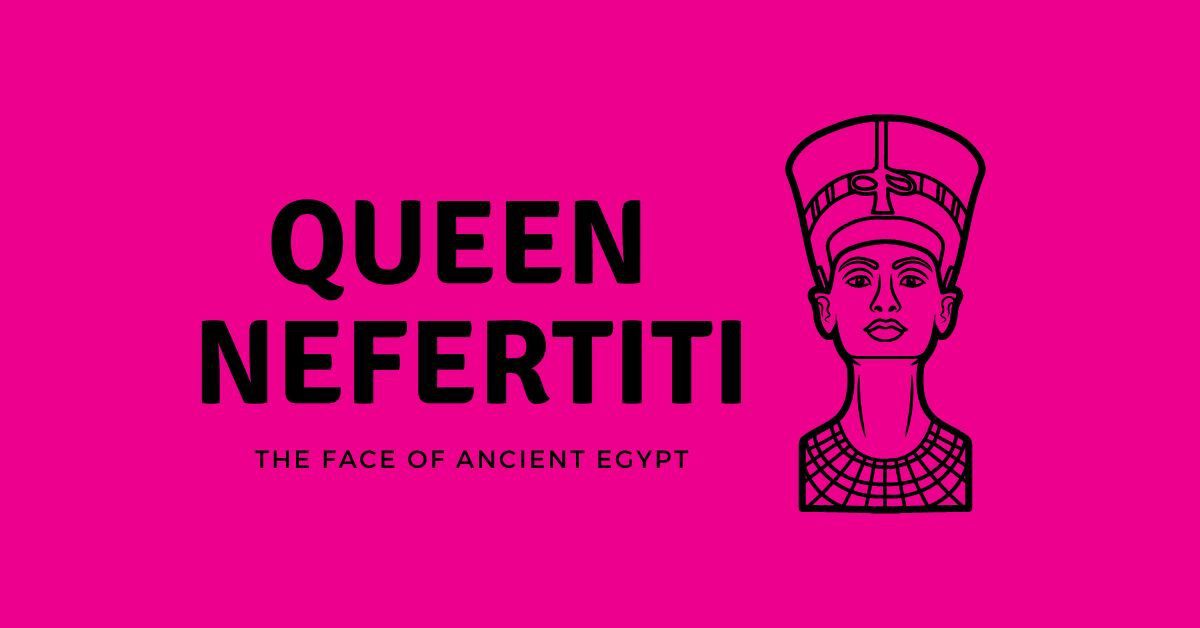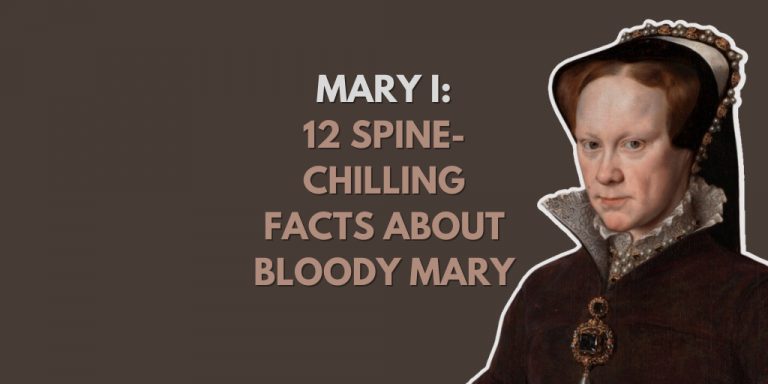Queen Nefertiti: The Face of Ancient Egypt
Queen Nefertiti was somewhat of a controversial character in ancient Egypt, loathed and loved by her people.
She was both an influential wife and queen during a remarkably polemical as well as wealthy period. She was a crucial player in the religious movement that saw ancient Egyptians worship just the sun god Aten rather than multiple gods.
While largely contentious in many aspects, her beauty was indubitable. This aspect was regarded as a feminine ideal leading to her reputation as a living fertility goddess.
Everyone knows the limestone bust of Nefertiti. It is probably the most famous face of ancient Egypt. This iconic image has immortalised Nefertiti over the centuries. But who was she? Does anyone know the location of her tomb? Where did she come from? It’s time to answer all your questions about Queen Nefertiti.
Who was Nefertiti?
The two great mysteries around Nefertiti come at the start and the end of her life. Let’s consider the start of her life. The problem is, to this day, no one knows where she came from.
“A Beautiful Woman Has Come”. This is the translation of the name Nefertiti.
One of the popular suppositions is that Nefertiti might have been a princess from Mitanni, current-day Syria.
Circumstantial evidence suggests she was Egyptian-born and that her father was Ay the courtier, brother of Tiy, Akhenaton’s mother.
In short, before her marriage to Akhenaten, we have no idea of her history.
It makes sense that the Queen of Egypt had standing of some sort before her marriage to the son of the pharaoh. However, without further discoveries, it seems unlikely that we will discover where she came fro
Who was Nefertiti married to?
The belief is that Nefertiti married Amenhotep III’s son, who would become pharaoh Amenhotep IV when she was just 15. Amenhotep IV changed his name to Akhenaten.
This was not unusual for ancient Egypt.
Amenhotep IV changed his name to Akhenaten. It would seem that the marriage between Akhenaten and Nefertiti was very happy. Images show that the two would kiss in public.
It would seem that this was a love match as opposed to some form of political union. This might explain the lack of understanding about Nefertiti’s origins. She might have been a simple girl who caught the eye of a prince and became an Egyptian Queen.
What role did she play in Amenhotep’s Religious reforms?
It was all thanks to Nefertiti and the pharaoh that the Aten cult was established during Egypt’s polytheistic conviction. This religious mythology defined Aten, the sun, as the only god worthy of worship. In honour of the deity, Amenhotep IV changed his name to Akhenaten.
Nefertiti’s name change showed absolutism for the religion, becoming known as Neferneferuaten-Nefertiti. Her new name translated to “beautiful are the beauties of Aten, a beautiful woman has come.
Queen Nefertiti and the Pharaoh Akhenaten may considered themselves the priests through whom the common people could access Aten.
Did Nefertiti have any children?
Nefertiti and Pharaoh Akhenaten produced six daughters during their union: Meritaten, Meketaten, Setepenre, Neferneferuaten Tasherit, and Neferneferure Ankhesenpaaten who was known as Ankhesenamun after she became Tutankhamun’s wife.
However, there were no sons born out of the union. At least, none are recorded.
Did Nefertiti rule alongside her husband?
Nefertiti simply disappeared from historical records around 12 years into Akhenaten’s 17 years of reign.
It is believed that Nefertiti became an official co-regent at this time, known as Neferneferuaten rather than by her old title. It is a fact that Egypt was ruled toward the end of the Amarna Period by the female pharaoh Neferneferuaten.
What titles did Nefertiti hold?
It was not unusual for royalty to hold several titles, and Nefertiti was no different during her time in power.
Hereditary Princess
Great of Praises
Lady of Grace
Sweet of Love
Lady of the Two Lands
Main King’s Wife
His beloved
Great King’s Wife
Lady of all Women
Mistress of Upper and Lower Egypt
How did Nefertiti die?
Why Nefertiti disappeared from the historical record around Year 12 of Akhenaten’s reign has never been satisfactorily answered.
Since there is no mention of her after this time, suppositions of her fate include the plague prominent in the city at the time, injury, or natural causes.
Ushabti fragments inscribed for Nefertiti were discovered, although Nefertiti did vanish from all depictions for reasons unknown. As mentioned, conjecture is that she adopted coregency status and took on the appearance of a man.
Other notions are that she became known as Pharaoh Smenkhkare or was exiled, coinciding with the trend to worship Amen-Ra.In short, we don’t know how or when Nefertiti died.
Where is Nefertiti’s tomb?
Nefertiti’s death was never recorded, and there is no proof that her remains have ever been discovered. She may, however, be one of the mummies recovered in the Valley of the Kings, although this remains speculation.
It stands to reason that if she died at Amarna, she would be buried in the Amarna royal tomb. Proof exists that one, if not more, of the Amarna burials, was reinterred at Thebes during Tutankhamun’s reign.
The “Younger Lady” found in the tomb of Amenhotep II has been written off as too young to be Nefertiti. Scans of Tutankhamun’s tomb in 2015, showing two chambers raised a theory that she was buried in the tomb of Tutankhamun, her stepson. What lends this some credibility is that, although Tutankhamun died young and unexpectedly, a tomb was already prepared for him. Another puzzle has always been the reason behind Tutankhamun’s tomb being significantly smaller than those of other pharaohs. Egyptologist, Reeves, assumes Nefertiti was already entombed here and that her section was sealed off to accommodate the youngster.
Where was the bust of Nefertiti Discovered?
The limestone stucco-coated Nefertiti Bust was likely crafted in 1345 BCE, having been found in the sculptor Thutmose’s workshop in Amarna by Ludwig Borchardt.
There are few works of ancient Egypt that have been copied more than this bust.
The bust currently resides in the Neues Museum in Berlin.
What did Nefertiti really look like?
This is very difficult to answer. Nefertiti’s mummy has never been found, so that no analysis can be done on the bone structure.
The famous bust of Nefertiti is a very stylised image and is not really meant to be taken as a likeness of the 18th dynasty Queen.
Who played Nefertiti in the 10 Commandments?
Wait…You are talking about Nefertari, not Nefertiti. She was one of the many wives of Rameses II. She was probably the first great royal wife. But she isn’t Nefertiti. Don’t get the two confused.
Incidentally, she was played by Anne Baxter in the film The 10 Commandments.






